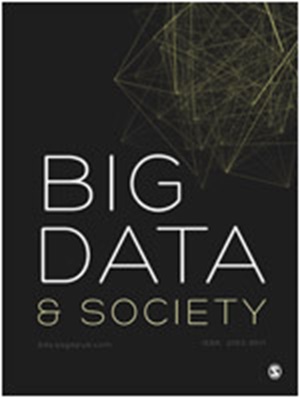荷兰推特想象的多方面、位置优越的数据中心
IF 5.9
1区 社会学
Q1 SOCIAL SCIENCES, INTERDISCIPLINARY
引用次数: 0
摘要
数据中心是一种占用空间、使用水和能源等资源、碳足迹大的材料结构。本文考察了荷兰推特领域2020-2022年期间围绕数据中心进行的更广泛的长期讨论。通过对推文和图像的分析,它确定并反思了活跃在讨论中的社区,以及他们产生的数据中心的愿景和想象。随着时间的推移,打开这些推文和图片不仅可以追溯到一种“反应性想象”的出现,这种想象批评了信息技术(IT)行业和(地方)政府的承诺,还可以追溯到讨论的盲点。它进一步揭示了新闻业在讨论中的重要作用,质疑了该行业的说法,并有助于数据中心对地球资源影响的“可见性扩展”。本文展示了想象的多面性和情境性,以及它们在决策和政策制定中的作用。本文章由计算机程序翻译,如有差异,请以英文原文为准。
The multifaceted and situated data center imaginary of Dutch Twitter
Data centers are material structures that take up space, use resources like water and energy, and possess a large carbon footprint. This paper examines the broader long-term discussion around data centers during the period 2020–2022 in the Dutch Twittersphere. Through an analysis of tweets and images, it identifies and reflects on the communities active in the discussion and the range of visions and imaginaries of data centers they produce. Unpacking these tweets and images over time traces not only the emergence of a ‘reactive imaginary’, critical of the promises of information technology (IT) industry and (local) governments, but also the blind spots of the discussion. It furthermore reveals an important role for journalism in the discussion by questioning the claims of the industry and contributing to a ‘visibility expansion’ of data center’s impact on Earth's resources. The paper shows the multifaceted and situated nature of imaginaries and their role in shaping decision-making and policy.
求助全文
通过发布文献求助,成功后即可免费获取论文全文。
去求助
来源期刊

Big Data & Society
SOCIAL SCIENCES, INTERDISCIPLINARY-
CiteScore
10.90
自引率
10.60%
发文量
59
审稿时长
11 weeks
期刊介绍:
Big Data & Society (BD&S) is an open access, peer-reviewed scholarly journal that publishes interdisciplinary work principally in the social sciences, humanities, and computing and their intersections with the arts and natural sciences. The journal focuses on the implications of Big Data for societies and aims to connect debates about Big Data practices and their effects on various sectors such as academia, social life, industry, business, and government.
BD&S considers Big Data as an emerging field of practices, not solely defined by but generative of unique data qualities such as high volume, granularity, data linking, and mining. The journal pays attention to digital content generated both online and offline, encompassing social media, search engines, closed networks (e.g., commercial or government transactions), and open networks like digital archives, open government, and crowdsourced data. Rather than providing a fixed definition of Big Data, BD&S encourages interdisciplinary inquiries, debates, and studies on various topics and themes related to Big Data practices.
BD&S seeks contributions that analyze Big Data practices, involve empirical engagements and experiments with innovative methods, and reflect on the consequences of these practices for the representation, realization, and governance of societies. As a digital-only journal, BD&S's platform can accommodate multimedia formats such as complex images, dynamic visualizations, videos, and audio content. The contents of the journal encompass peer-reviewed research articles, colloquia, bookcasts, think pieces, state-of-the-art methods, and work by early career researchers.
 求助内容:
求助内容: 应助结果提醒方式:
应助结果提醒方式:


